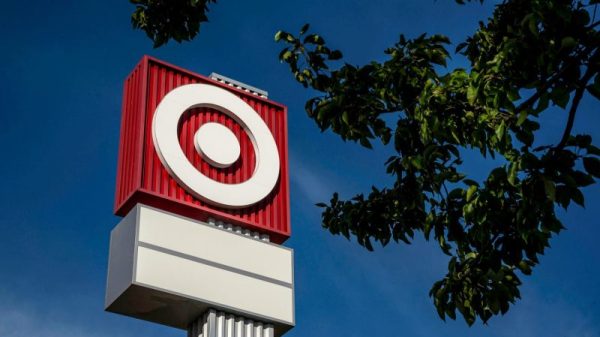In the bustling world of retail, managing stock effectively is not merely an operational need but the lifeblood of business success. Having a holistic view of all assets is critical for any business that relies heavily on its stock and equipment for generating revenue, such as retail stores. Whether a physical brick-and-mortar clothing shop or an online e-commerce store, it’s important for retailers to have greater visibility of their assets. With data from Techtivity reporting that the retail industry witnessed a staggering loss of $300 billion in revenue due to poor inventory management in 2019, the vital role of effective asset management in the retail sector is clearly established. One key component of this essential process is asset tracking, a practice that holds immense potential to revolutionise how retailers manage their inventory.
Understanding Retail Asset Tracking and IoT Technologies
Asset tracking is a method used to monitor the location, quantity, and status of assets, which, in a retail context, typically refers to the products being sold. The tracking process involves knowing when items will arrive from suppliers, how many items are in store, and using this data to make informed decisions about what and when to order. Retail businesses need to track products while also keeping their pricing strategy in mind.
With the steady digital transformation of retail, it’s projected that by 2031, an immense 57% of global retail sales will stem from online shopping. This trend underscores the urgency for the retail industry to optimise the customer journey from initial interaction to final purchase, a feat achievable through effective retail asset tracking solutions.
Leveraging cutting-edge IoT technology, such as RFID, and retail Asset Tracking Software, retailers can monitor an asset’s entire life cycle. The primary aim is to amplify the customer experience, but the benefits don’t stop there. Asset tracking enhances stock control, mitigates the risk of lost and stolen assets through asset tagging — a key strategy in combating ‘shrinkage’ — and heightens the precision of inventory management. The outcome is a reduction in labour demands and an elevation in product availability. Collectively, these factors emphasise how retail asset tracking tools are a judicious approach to trimming costs and bolstering profits.
The Importance of Asset Tracking in Retail
According to a report by the IHL Group, global retailers lose nearly $1.75 trillion annually due to overstocks, out-of-stocks, and returns. These issues are largely preventable with an efficient asset tracking system. An asset tracking system enables real-time visibility into the inventory and stock levels and availability, reducing the likelihood of stock-outs and overstocks. It allows retailers to anticipate demand, adjust orders accordingly, and ensure the right products are always available at the right time.
Moreover, it provides valuable data for analysis and decision-making. Retailers can identify sales trends, optimise product placement, and make informed purchasing decisions. In a study by McKinsey, companies that leveraged data-driven insights saw up to a 23% increase in revenues and a 19% reduction in costs.
Asset tracking systems also play a pivotal role in enhancing the omnichannel retail experience, delivering a seamless transition from brick-and-mortar stores to online platforms. With real-time tracking, these systems ensure that stock levels are consistently updated across all channels, providing customers with accurate inventory information whether they’re browsing in-store or online. When a customer orders a product online, the system instantly reflects the reduced stock level, preventing overselling and maintaining inventory accuracy. Moreover, these systems facilitate the increasingly popular “Buy Online, Pick Up In-Store” (BOPIS) model. Once an online order is placed, the system can pinpoint the exact location of the item in the store or warehouse, enabling quick and efficient order preparation. Thus, asset tracking systems streamline the retail process, making it convenient for both the retailer and the customer, enhancing the overall retail experience.
The Core Benefits Asset Tracking Technologies Will Bring to Retail Businesses
Improved Inventory Management Resulting In Lower Unnecessary Costs
One of the foremost benefits of implementing asset tracking solutions in retail is the enhancement of inventory management. A study revealed that out-of-stock situations alone, exacerbated by poor inventory management, cost retailers approximately $634.1 billion in lost sales annually. Asset tracking technology can prevent such losses by providing real-time visibility of inventory, ensuring accurate stock levels, and preventing overstocking or understocking scenarios.
By using technologies such as RFID and IoT devices, retailers can monitor the real-time location and status of their inventory items. This facilitates quicker restocking of popular items, thereby reducing instances of stockouts, and consequently improving customer satisfaction. Moreover, it also prevents excessive investment in slow-moving items, thus optimising the use of warehouse or shop floor space and capital.
Improved Customer Experience Through Fulfilling Available to Promise and Better Delivery Times
Retailers today operate across multiple channels, such as online stores, mobile apps, customer service, and buy-online-pick-up-in-store scenarios. In this context, real-time inventory visibility becomes crucial. Any discrepancies in inventory data could lead to delayed shipping times and, consequently, cancelled orders, resulting in a poor customer experience. Real-time inventory visibility refers to presenting ‘Available to Promise’ (ATP) inventory across the retailer’s supply network to all order capture channels. ATP represents the stock a retailer can promise to the customer and takes into account the total supply from all fulfilment locations and the total demand from various channels, factoring in safety stock and capacities.
The key benefits of real-time inventory visibility include improved customer satisfaction, better response times, and improved performance metrics. Most top retailers are adopting real-time inventory visibility to enhance the customer experience and improve brand loyalty.
Enhanced Loss Protection for Inventory
Asset tracking solutions also play a vital role in reducing shrinkage, a significant problem in the retail industry. According to the National Retail Federation, inventory shrinkage accounted for 1.62% of sales in 2019, equating to almost $61.7 billion. Asset tracking can help mitigate these losses by providing comprehensive visibility and control over assets.
Innovative tracking technologies like NFC (Near Field Communication) tags have the capacity to identify unauthorised relocation of inventory, immediately notifying store personnel of potential thefts. Additionally, the deployment of this technology can act as a deterrent for potential thieves, leading to a further decrease in shrinkage. As a result, by reducing losses, retailers can boost their profitability and positively impact their bottom line.
Streamlined Supply Chain
By providing real-time visibility, asset tracking solutions can streamline the entire supply chain, from the warehouse to the store shelf. This can result in significant time and cost savings. According to a report by Zebra Technologies, 72% of retailers plan to reinvent their supply chain with real-time visibility enabled by automation, sensors, and analytics.
With asset tracking, retailers can monitor the progress of goods throughout the supply chain, identify bottlenecks, and implement corrective measures promptly. This can reduce delivery times, enhance supply chain reliability, and result in better customer satisfaction.
Summary
In conclusion, the benefits of utilising asset tracking solutions in retail are manifold. By improving inventory management, reducing losses, optimising asset utilisation, streamlining the supply chain, and enhancing the customer experience, these technologies can help retailers achieve higher levels of efficiency and profitability. As retail businesses continue to navigate an increasingly complex and competitive landscape, the adoption of asset tracking solutions will undoubtedly be a critical factor in their success.
The post Sustaining the Pulse of Retail: Maximising Business Success Through Asset Tracking and IoT Technologies appeared first on IoT Business News.
























